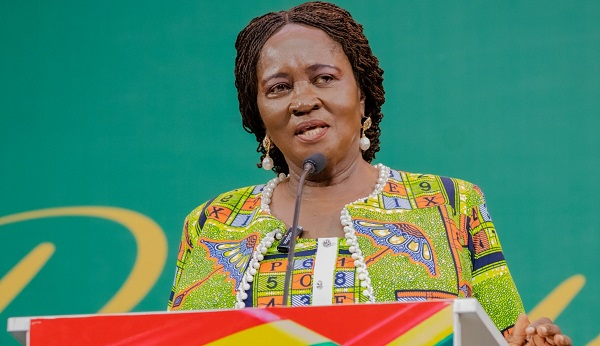Donald Trump, the Tariff Man, has relished his retaking of the White House. He has also let everyone know, prematurely it seems, he would welcome a third term as president. That would require repealing the 22nd Amendment to the U.
S. Constitution, or it would require some imaginative “workaround,” which Trump thinks is a possibility. Asked last week about a possible 2028 presidential campaign against former President Barack Obama, Trump said: “I would love that — that would be a good one.

” So, why did the 22nd Amendment get added to the Constitution in 1951? And what is this new debate all about? The idea of limiting presidents to one or two terms in office was considered at the Constitutional Convention in Philadelphia in 1787, but it was not put in the Constitution. Our first president, George Washington, eagerly retired after two four-year terms in office because he was exhausted. He died three years later.
Thomas Jefferson joined Washington and retired after his second term. President Andrew Jackson also stepped down after eight years in the White House. Both Jefferson and Jackson embraced the two-term idea.
Ulysses S. Grant and Theodore Roosevelt, after having been out of office for one four-year term, attempted to win an additional third term, yet both failed to do so. So, for 150 years, the United States experienced what was known as the “two-term tradition.
” Presidents were expected to voluntarily step down after two four-year terms in office. That tradition changed in 1940. Franklin Delano Roosevelt believed that he was personally needed to provide the leadership necessary to guide the United States in a turbulent world in which World War II was convulsing many European countries.
U.S. voters agreed with Roosevelt.
He was reelected to a third term in 1940 and, four years later, despite being in poor health, he was reelected in 1944 to a fourth term. Understandably, Republicans feared that “the Roosevelt machine” and Roosevelt family members might control the White House for generations to come. The Republican Party gained control of Congress in 1946.
FDR had died in April 1945. Less than two years later, on March 21, 1947, the 22nd Amendment to the Constitution was approved by the necessary two-thirds vote in each house of Congress. The amendment limited the president to two four-year terms in office.
It was unanimously supported by Republicans, yet it was supported by some conservative and moderate Democrats. A young member of the House named John F. Kennedy also voted for it.
It took a while, but by Feb. 27, 1951, the presidential term limits amendment was ratified by the required three-fourths of American states. The first president to be limited by the amendment was, ironically, Republican President Dwight Eisenhower.
He probably could have been elected to a third term in 1960. The core of the 22nd Amendment states that, “no person shall be elected to the office of the president more than twice, and no person who has held the office of president or acted as president for more than two years of a term ..
. shall be elected to the office of the president more than once.” Liberals and pro-FDR Democrats railed against this amendment.
They called it undemocratic, disrespectful to the voters and a wrongheaded move that would deny the country of a tried, tested, and veteran leader in a future time of emergency and challenge. But large majorities of Americans supported the 22nd Amendment. At least two-thirds of those surveyed have consistently told pollsters over the years that they support this extra “check-and-balance” against a possible authoritarian ruler in the White House.
The United States has been blessed with several excellent and several good presidents. We have also had presidents who have lied to us, misled us, and covered up corruption. And we know the presidency has considerably more power than it did when this 22nd Amendment was put into effect in the early 1950s.
Some supporters of Republican President Ronald Reagan back in 1987 campaigned for repealing the 22nd Amendment. The effort foundered. Today, some stalwart MAGA loyalists have initiated new efforts to repeal the 22nd amendment.
Andy Ogles, a Republican representative from Tennessee, has introduced a motion to repeal the 22nd Amendment. The prospects for his proposal may seem dim, but it has rekindled the long-standing debate over the wisdom of a two-term limit. The ultimate argument against the two-term rule is that it defies the basic underlying principle of democracy.
If, at the end of a president's second four-year term in office, he or she and his or her policies are extremely popular, and he or she is in good health with a reasonable prospect of competently serving out the next four years in office, then it is a denial of democracy that they not be eligible to run for a third term in office. Yet here is how Republican President Calvin Coolidge discussed the issue in his autobiography nearly 100 years ago: “It is difficult for a man in high office to avoid the malady of self-delusion. They are always surrounded by worshippers.
They are consistently ...
assured of their greatness. “(They live in) an artificial atmosphere of adulation and exultation which sooner or later impairs their judgment (and puts them) in grave danger of becoming careless and arrogant.” Those who agree with Coolidge and the Republicans in Congress in the late 1940s view the rotational principle institutionalized in the 22nd Amendment as a check against the ultimate type of corruption — the arrogance of a leader who claims they are indispensable.
We might not like it, and our country's founders did not intend it, but the White House has become the world's “911.” It is the place where the world looks for leadership in an international emergency. (Well — maybe not last week.
) This does not mean presidents always get their way. But the president’s international responsibilities, and the emergency powers given the president by Congress, notably after Sept. 11, 2001, have grown and grown.
So, in our president-centric system, the 22nd Amendment seems to many people as an even more necessary check on presidential overreach or a presidential messiah complex. Some critics of the 22nd Amendment say that it may undermine presidents by making them “lame ducks” in the second term. Trump is doubtless worried about this.
But Presidents Eisenhower, Reagan and Clinton all had successful second terms. Indeed, Reagan and Clinton enjoyed higher public approval ratings in their second terms than their first terms. Americans want an energetic and effective presidency, yet understandably they fear the potential abuse of power.
We want to be led, but we also want to be free. The 22nd Amendment, most people believe, strikes a pragmatic balance between our yearning for leadership and our fears about carelessness, corruption and the intoxicating aspects of power. Americans have unreasonably high expectations for presidents, yet they do not consider that position as a career job with tenure.
Rather, they view the office as a temporary honor to be exercised with Lincoln-like humility. Eight years should be ample time for a president and administration to launch major policy changes. And if such policies are valued by the public, they will likely be honored and protected by succeeding presidents.
Calvin was right in 1947, and again in 1962, when he said that two terms are enough for any human being to be president of the United States..
Politics

Cronin and Loevy: Why have the 22nd Amendment term limits on presidents?

Donald Trump, the Tariff Man, has relished his retaking of the White House.















